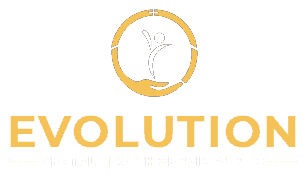
28 Sep Change
Change is the theme of therapy. A person sees a therapist because they want to change some aspect of their life. Or maybe they want to change several aspects of their life. Whatever it is, change is the goal.
Honestly, though, change is the theme of life. Whether or not a person ever engages in therapy, they will experience many, many changes in life. We can’t escape it. And really, we shouldn’t want to. Change is required for growth. So, change can be very good.
Change can also be hard. Frequently, people come into their first appointment with a therapist with the desire to change something that’s been part of their life for years and has become a part of who they are, how they see themselves, part of their identity. Changing something like that never comes easy, and it rarely comes quickly. So, how does a significant change like that happen?
Back in the 1970s, James Prochaska and Carlo Di Clemente developed a model around how change happens. This is referred to as the Stages of Change Model or the Transtheoretical Model. This model has become accepted by many mental health professionals, and I’m one of those professionals who’s into it. It just makes sense, and it provides a great framework from which to help someone through the process of change.
This model has five stages that people generally go through when they successfully make a significant change. I’ll go through each stage. For the sake of explanation, I’ll use three hypothetical persons as examples. One will be a drug addict, one will be a depressed person, and one will be someone who is overworked and burned out.
The first stage of change is the Precontemplation stage. In this stage, the individual feels no need for change because they do not see a problem. This is more commonly known as denial. This is the drug addict that says he can quit anytime he wants. It’s the depressed person who says there’s nothing wrong with wanting to sleep all day every day. It’s the person who is totally burned out but says it’s okay because working 70 hours per week is just what you have to do to get ahead these days. This is pre-contemplation or denial, and it’s where everyone begins.
The second stage of change is the Contemplation stage. This is when a person starts to think they might have a problem. This generally occurs when an individual starts to see the negative effects of the behavior. The addict realizes he’s spending an insane amount of money on pills. The depressed person notices their relationships are suffering because of their isolation. The burned-out person starts getting into trouble at work because things quit getting done. This point of starting to consider that there may be a problem is contemplation.
The third stage of change is the Preparation stage. This is the point when the person starts looking into what he or she needs to do to change. This is a time of exploration and considering options. The addict reads about self-help groups. The depressed person googles local therapists. The burned-out individual considers who at work she should talk to in order to improve her work/life balance. Because the person is trying to figure out what action to take, this stage is preparation. The person is preparing for change.
The fourth stage of change is the Action stage. This is when the person puts feet to the path. It’s time to start doing things, taking tangible steps. The addict starts going to a local Narcotics Anonymous meeting. The depressed person starts seeing a therapist. The burned-out individual changes her work schedule. This stage also requires flexibility because sometimes a person has to try a few things before they know what works. The addict figures out he needs to do a medically supervised detoxification program because of the level of physical dependency he’s reached. Otherwise, he may never get off those pills. The depressed person decides to try an anti-depressant medication to go along with therapy in order to diminish symptoms. The burned-out person realizes she will need to change her spending habits to allow for fewer work hours. This period of taking concrete steps toward change and trying new things to figure out what works in action.
The fifth stage of change is the Maintenance stage. By now, the person has figured out what works and what doesn’t, and they’ve developed a new way of life that successfully addresses the problem they wanted to change. Things are going well. The addict hasn’t touched the pills in over six months. The depressed person feels content and is living an active, connected life again. The burned-out person is living a healthy, balanced life that allows her to do well in her job and in the rest of her life. The trick now is just to keep doing what works. This new routine is called maintenance.
There is another, unfortunate stage of change. That is Relapse. Relapse is going backward. It’s returning to old ways of thinking and behaving. The recovering addict starts to reminisce about how good the high felt. The recovering depressed person decides medication is no longer needed. The formerly burned-out person decides to work late a few nights to earn extra money for some new thing she doesn’t really need. These thoughts lead to reverting back into old behavior, and before you know it, right back into the same old problem and all that comes with it. The is a relapse, and it has to be fought against.
So, this is how people change. What do you need to change? Which stage of change are you in? What do you need to do to get to the next stage or to avoid relapse? Let’s keep changing for the better.
Evolve.



